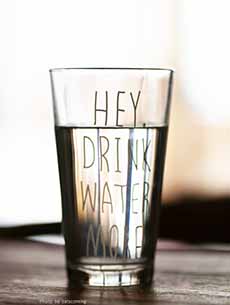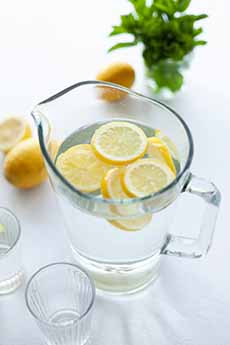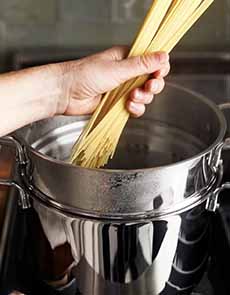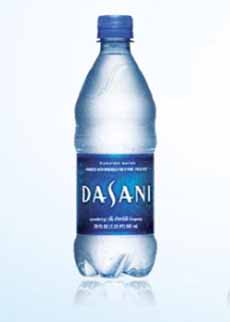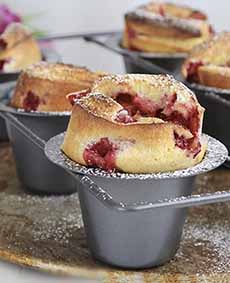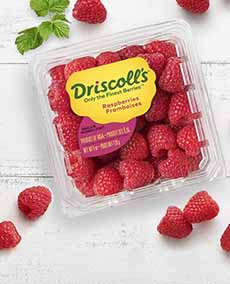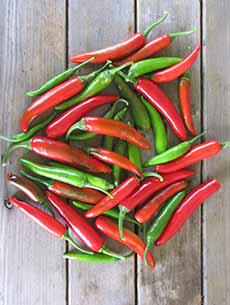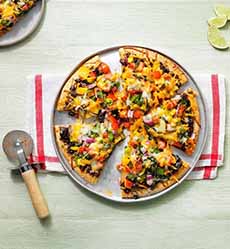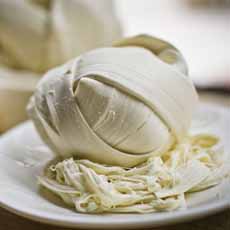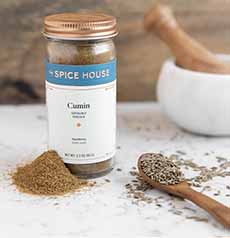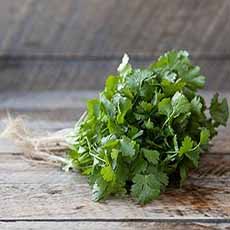|
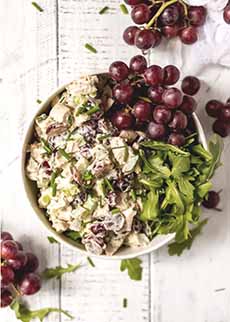
[1] Use red grapes for color contrast. We like to add some arugula with the greens when serving Here’s the recipe (photo © Wonky Wonderful).
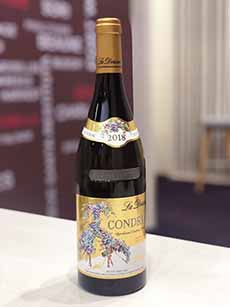
[2] Pair the chicken salad with a Viognier wine, such as this elegant Condrieu from the best producer*** in the Rhône Valley of France, E. Guigal. The 2020 vintage is in the $50 range. The 2020 vintage of their top-of-the-line Condrieu, La Doraine, made from the top 5 terroirs in Condrieu, is $109 (photo © Wine International Association).

[3] One of the highly-regarded Viogniers from the U.S. is Barboursville Vineyards, made in Virginia. The 2020 vintage is in the $20-$25 range (photo © Bottle House).
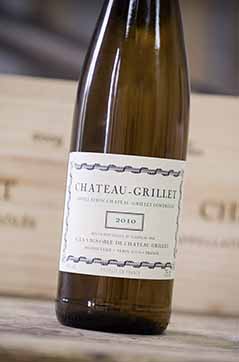
[4] The finest Viognier wines are vinified to age. This 2010 Château Grillet was made to be drunk between 4 and 15 years from the vintage date. The rare bottle will cost you $540 if you can find it (photo © Château Grillet).
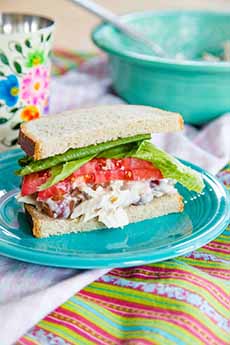
[5] You can serve the chicken salad on greens or lettuce cups or in a sandwich. Here’s the recipe (photo © Cupcakes & Kale Chips).
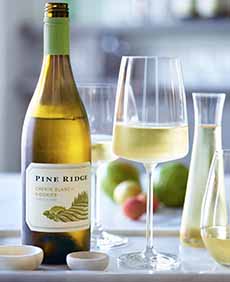
[6] Pine Ridge Vineyards, in Napa Valley, California, makes a highly-regarded blend of Chenin Blanc and Viognier (photo © Pine Ridge Vineyards).
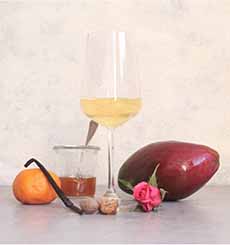
[7] A glass of Viognier with examples of the flavors in this particular bottling: vanilla, honey, nutmeg, wet stone, orange, rose, and mango. Here’s more about the flavors (photo © Every Glass Matters).
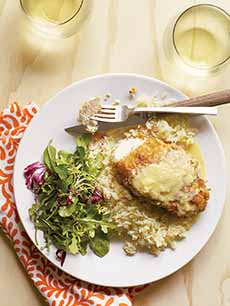
[8] Macadamia Chicken with Orange-Ginger Sauce and Coconut Pilaf, a nice pairing with Viognier. The tropical flavors match Viognier’s perfume and bright citrus and stone-fruit flavors.Here’s the recipe (photo © Sunset Magazine).
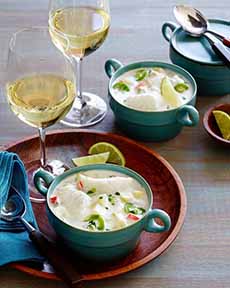
[9] Sea bass with coconut chowder—fish in a cream sauce—is a great pairing with Viognier. Here’s the recipe (photo © Discover California Wines).
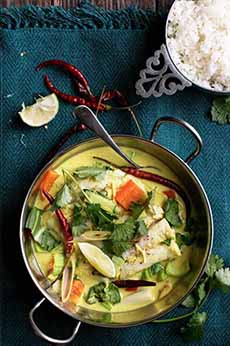
[10] Viognier pairs beautifully with mild curries (photo © Sunbasket).
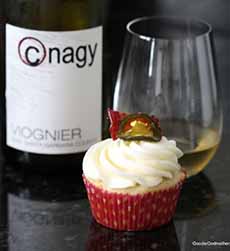
[11] Something different: Viognier paired with a bacon-candied jalapeño cupcake. Here’s the recipe (photo © Goodie Godmother).
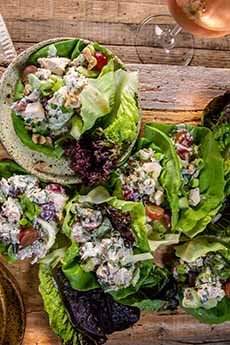
[12] Chicken salad with walnuts, grapes, and a honey-poppyseed dressing. The recipe is below (photo © Discover California Wines).
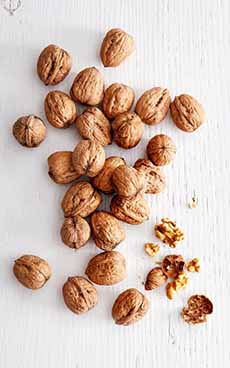
[13] If you don’t like walnuts, macadamias and pecans also work in this chicken salad (photos #11 and #13 © Good Eggs).
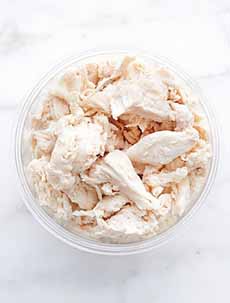
[14] While the recipe calls for cubed chicken breasts, we shredded the breasts from a roasted chicken.
|
|
We have two favorite chicken salad recipes. One is curried chicken salad, and the other is chicken salad with walnuts and grapes.
We have a recipe for the latter below, which is different from our own recipe in that it features a nuanced honey and poppy-seed dressing.
The recipe is from Discover California Wines, the website of the California Wine Institute, which suggested that we pair it with a glass of rosé or a Viognier.
Viognier, we thought: We’ve never written about that alluring white wine. So here’s everything to know before you head to the wine store to purchase a bottle of the exotic deliciousness that is Viognier.
> National Viognier Day is the last Friday in April.
> The history of Viognier is below.
> Food pairings with Viognier are below.
> The chicken salad recipe, a perfect pairing, is below.
> The history of wine.
WHAT IS VIOGNIER?
Viognier (VEE-own-yay) is a lovely warm weather white wine, best drunk young. To start with its home territory in France:
Viognier is a grape long grown in two tiny appellations(A.O.C.)** in the Northern Rhone Valley of France: Condrieu and Château-Grillet, a monopole (which translates to monopoly, and is a French term that describes when an entire vineyard is owned by a single grower or company).
The wine made from it, called Condrieu (con-dree-YOU) in France and Viognier elsewhere, is not well-known in the U.S.
It might get a bit wine-geeky to note that the tiny appellation of Condrieu spans about 202 hectares or 500 acres, and in the even tinier appellations of Château-Grillet (photo #4), just 3.8 hectares, 9.4 acres, which comprises a single producer, Château-Grillet.
The number of cases produced annually is not huge: 30,000 are Condrieu A.O.C. and just 833 cases of these are Château-Grillet.
These two French Viogniers are rich, concentrated white wines low in acidity (like Gewürztraminer, although tasting totally different).
How About The Rest Of The World?
More and more Viogner is being planted in the worldwide. The countries that produce a significant amount of Viognier wines are Australia, Chile, France (Northern Rhone and Languedoc-Roussillon), New Zealand, South Africa, and the U.S. (largely in California, Texas, and Virginia, with some on the North Shore of Long Island).
There are now 3,000 acres of Viognier planted across California alone. Viognier’s time is coming.
To compare it with the most popular white wine grape: 90,227 acres Chardonnay are planted in California [source] producing 54 million cases [source].
Why Isn’t There More Viognier?
The traditional clone‡‡‡ of Viognier grown in Condrieu produces low yields of small berries and is less productive than the clones planted in other regions of France.
This means less wine per acre, which ratchets up the expense of Condrieu.
A bottle of the small production Château-Grillet is $486.99 for the 2019 vintage.
The much more affordable E. Guigal Condrieu 2020 is $39.99.
In other areas, different Viognier clones have proven more rigorous [source].
But winemakers beyond the Rhone Valley must make wines for a number of years before they can determine how to best vinify their Viogner.
And, as with less-known wines, marketing is needed to convince most of the public to try them.
The Difference Between Viognier & Condrieu
In France and most of Europe, wines are named for their geographic location. Thus, the wine made from the Viognier grape in the Rhone Valley is called Condrieu.
Another example: The Chardonnay made in the Chablis appellation in Burgundy region is called…Chablis. The Chardonnay made in the Burgundy commune of Meursault is called…Meursault.
In the U.S. and elsewhere, wines are known by their varietal names; so elsewhere in the world, the wine is called Viognier, or, in the second examples, Chardonnay.
Styles Of Viognier Wines
Viognier is predominantly made in bone-dry styles.
You can also find Viognier in off-dry variations when there is a bit of residual sugar in the grapes.
Viogner blends are frequent in the Rhône (and further south), where it is blended with Marsanne and Roussanne to create a softer, lighter style [source].
There are also sparkling Viogniers.
What Does Viognier Taste Like?
The most floral of white wines, a glass of Viognier is a delight on a warm spring or summer day.
On the palate, you’ll find ripe stone fruit flavors such as apricot, nectarine, peach, and often, pear and tangerine (the latter two not stone fruits). You may also find notes of honey, and a long finish.
These aromas and flavors are deceptive, leading one to think that the wine is sweet. In fact, very few Viogniers have residual sugar. As noted above, most are bone dry.
What Is The Aroma Of Viognier?
If the aroma of a glass of white wine leaps out at you with floral perfume and exotic spice, there’s a good chance it’s a Viognier.
Wherever it is made, Viognier is marked by its intense aromatics: heady with floral perfume (honeysuckle, jasmine, roses, violets), stone fruits, and spice.
Depending on where it is grown and how it is vinified, Viognier, like all wines, will vary in flavor and aroma.
Viognier from cold climate areas, such as the Rhône Valley and Virginia, has delicate aromas of jasmine and roses, in combination with stone fruits. These wines tend to be slightly lighter than Viognier from warmer regions.
Viognier from warm climate areas , such as Australia, California, Chile, Italy, and South Africa, has strong floral aromas in combination with tangerine, apricot, and tropical fruits. These wines are usually richer than those from colder regions [source].
Another consideration: Is the wine oaked?
Oak aging is quite common for wines made in the Rhône Valley. If the wine is aged in oak, the wood will add aromas like vanilla, cinnamon, and clove.
Many New World Viogniers forgo the oak in order to create a fresher style [source].
If you know your wines, Viognier’s powerful aromas of peaches, apricots, and violets make it one of the world’s most recognizable grape varieties.
VIOGNIER FOOD PAIRINGS
Viognier has low-to-medium acidity, so avoid anything too acidic, such as lemon, tomato sauce, or vinaigrette. Keep away from charred meats—although a sweet barbecue sauce works.
Spice is always nice! Viognier loves spices, from Moroccan tagines to curries and any spicy Asian foods.
A recipe with cardamom, cinnamon, coriander, or ginger would be a happy marriage.
Spicy dishes paired with sweet flavors—chutney, fruit salsa, honey—are very happy pairings.
The wine also stands up to jalapeños.
Viognier also loves creamy sauces with herbs (chervil, parsley, tarragon) are great. Please add a dash of Viognier to the sauce at the end of cooking the sauce.
Pair Viognier with:
Cheese and fruit plates‡‡
Chicken salad: especially with fruits such as grapes, mango, and peach
Fish: fatty fish such as salmon, fish dishes with cream sauce, mild fish curries
Fruit salad: especially with apricot, mango, nectarine, peach
Lighter meats: pork and veal
Poultry: roast or grilled chicken and turkey, chicken pot pie
Roasted vegetables
Sauces: cream sauces, mild curries
Shellfish: crab, scallops, lobster, shrimp
Spicy dishes: Chinese, Indian, Mexican, Thai (great with Pad Thai!)
> Check out the recipes on the Condrieu website.
> Head to the Discover California Wineswebsite for more food and wine pairings.
THE HISTORY OF VIOGNIER
Historically grown in the Northern Rhône Valley, the precise origin of the Viognier varietal is unknown. Historical records confirm that Viognier was grown in the area during the Roman Empire.
According to one story, Marcus Aurelius Probus, who was the Roman emperor from 276 to 282 C.E., imported Viognier into Condrieu from Dalmatia (present-day Croatia) in 281 C.E.
The story is that he brought Viognier to the region as a means of replacing vineyards previously destroyed by Emperor Vespasian (who reigned from 69 to 79 C.E.). Legend has it that Vespasian tore up the Condrieu vineyards after the locals revolted. He attributed the rebellion to drinking too much of the local wine.
However, modern DNA testing has shown that Viognier’s mother is Mondeuse Blanche, a grape from Savoie. Mondeuse Blanche is also the mother of Syrah, the main grape of the Northern Rhône that is used to make classic wines such as Cornas, Côte-Rôtie, and Hermitage.
This French parentage negates the story about Marcus Aurelius Probus importing the grape from Dalmatia. Instead, the locals, or the Romans found it, and cultivated it, in Gaul.
When the Romans were forced out of Gaul by Celtic tribes in the 5th century, the Viognier vines remained uncultivated for centuries. They were revived by locals in the 9th century.
Some of the farmers cultivated the vines in the location that became the Condrieu A.O.C. The varietal spread to the neighboring Château Grillet, and from there, in the 14th century, to the papal palace at Avignon.
Modern Times
Production of the Viognier grape was never prolific. Viognier is a troublesome grape to grow, more prone to disease than other varietals, susceptible to spring frost, and unpredictable in the quantity of its yield.
Fast-forward to the 20th century: By the 1960s, Viognier plantings had diminished dramatically, down to an estimated 15 acres in Condrieu and little more elsewhere in the Rhône Valley [source].
But Rhône wines began to become popular worldwide in the 1970s. As of 2016, Viogner was planted on some 40,000 acres worldwide, including more than 20,000 acres in France [source].
Today there are significant plantings in Italy (4,500 acres), the U.S. (3,600 acres), and roughly 2,000 acres each in Argentina, Australia, Chile, and South Africa.
The 3,000 acres of Viognier in California make it by far the most planted white Rhône variety**** in the U.S. [source]
HOW ABOUT A VIOGNIER TASTING PARTY?
Here’s a nice assortment:
Virginia: Barboursville Vineyards (photo #3)
France, Rhône Valley: E. Guigal
California, Napa Valley (Stag’s Leap District): Pine Ridge Vineyards
California, Paso Robles: Tablas Creek Vineyard
Texas, Texas High Plains: Spicewood Vineyards
RECIPE: CHICKEN SALAD WITH WALNUTS & GRAPES
This recipe for Chicken Salad With Walnuts & Grapes (photos #1 and #11) is equally delicious served atop a greens, in a sandwich, in lettuce cups, on crostini, or scooped up with crackers…all with a glass of Viognier or other dry white wine or a rosé.
You can substitute ingredients according to your palate of the moment, with different nuts (cashews, pecans, pistachios) and dried fruits (diced apricots, cranberries, raisins) instead of or in addition to the grapes.
Ingredients For 4 Servings
For The Salad
1 cup halved red grapes (130g)
3/4 cup toasted chopped walnuts (75g)
3 stalks of celery, thinly sliced
3 green onions, thinly sliced
¼ cup chopped flat-leaf parsley (12g)
2 cups of cubed cooked, skinless chicken breast (300g)
For serving: leafy greens or lettuce cups
For The Dressing
¼ cup light mayonnaise (substitute regular)
¼ cup low-fat Greek yogurt
1 tablespoon fresh lemon juice
1 tablespoon grated lemon zest
1 teaspoon grainy mustard
1 teaspoon honey
1 teaspoon poppy seeds
¼ teaspoon sea salt
Preparation
1. PLACE the chicken, grapes, walnuts, celery, onions, and parsley in a medium bowl and toss gently.
2. WHISK in a second medium bowl until well-mixed the mayonnaise, yogurt, lemon juice and zest, mustard, honey, poppy seeds, and sea salt.
3. POUR over the chicken mixture and toss gently until everything is evenly combined. Serve immediately in a sandwich or in lettuce cups or keep well-chilled until ready to serve. Consume within three days.
CHECK OUT WHAT’S HAPPENING ON OUR HOME PAGE, THENIBBLE.COM.
|
________________
*Other popular French white wine grapes include Chenin Blanc, Gewürtztraminer, Pinot Blanc, Pinot Gris, Riesling, and Semillon. There are numerous others.
**An A.O.C. or Appellation d’Origine Contrôlée is a legally defined and protected area where specific grapes can be grown and vinified. Condrieu and Château-Grillet grow only Viognier grapes and while anyone can grow the grape anywhere they like, only these two A.O.C.’s can make and sell Condrieu wines. A.O.C. is a French certification granted to certain French agricultural products, that guarantee their place of origin, quality, and style. Here’s more about it.
***The best producer of Condrieu wines may be E. Guigal, but other noteworthy producers are, in alphabetical order, Alain Paret, Andre Perret, Bonnefond, Chapoutier, Delas Freres, Rene Rostaing, Georges Vernay, Facchin, Jaboulet, Jean Michel Gerin, Madame P. Dumazet, Michel Ogier, Nicolas Perrin, Pierre Gaillard, Saint Cosme, Tardieu Laurent, Vidal Fleury, and Yves Cuilleron.
[source].
****“Variety vs. varietal, grape vs. wine: “Variety” refers to different types of grapes: Cabernet Sauvignon, Chardonnay, Pinot Noir, Sauvignon Blanc, etc. “Varietal” refers to a wine that has been made from one grape variety, which outside of Europe coincides with the variety of grape. But in Europe: Hermitage and Châteauneuf-du-Pape are made from Syrah grapes, Bourgogne Rouge (Red Burgundy) from Pinot Noir grapes, Champagne from Pinot Noir and Chardonnay grapes, Sancerre from Sauvignon Blanc grapes.
†The leading attribution for the name for the grape is the French city of Vienne, which was a major Roman outpost. Another story accords the Roman pronunciation of the via Gehennae, meaning the “Road of the Valley of Hell”—likely an allusion to the difficulty of growing the grape.
‡‡Cheese pairings: Brie/Camembert and other double and triple creams, fresh chèvre, Comté, Emmenthal, Gouda, Gorgonzola or other blues, or Gruyère, with nuts (almonds, macadamias) and fruits (grapes, mango, peaches).
‡‡‡A grape clone is a cutting taken from an existing grape vine that’s grafted onto rootstock. The vine is chosen due to specific traits a grower wants to reproduce like increased disease resistance or fruit quality.
|
